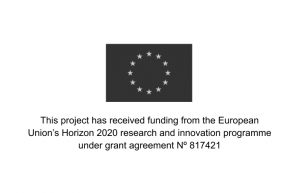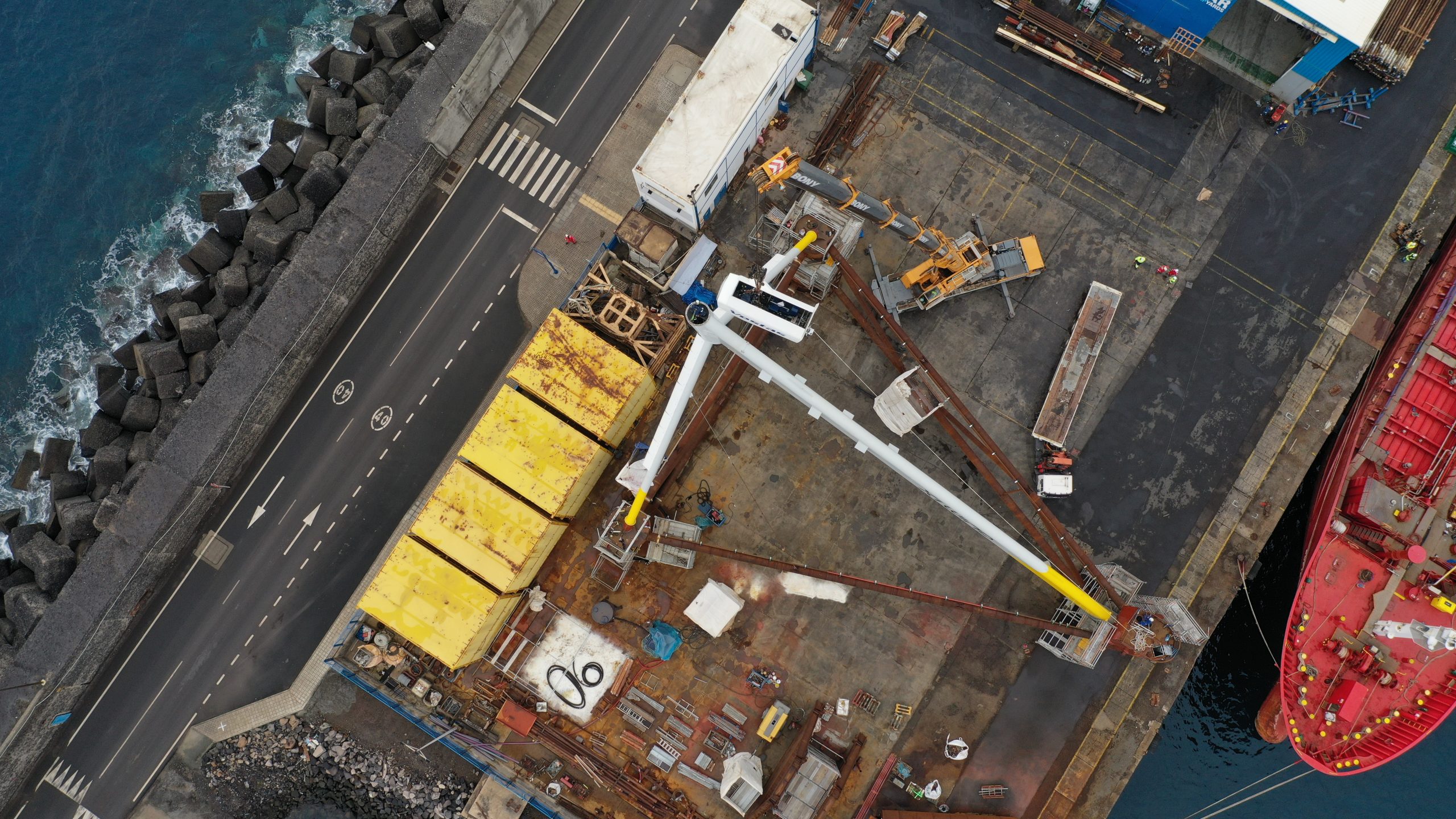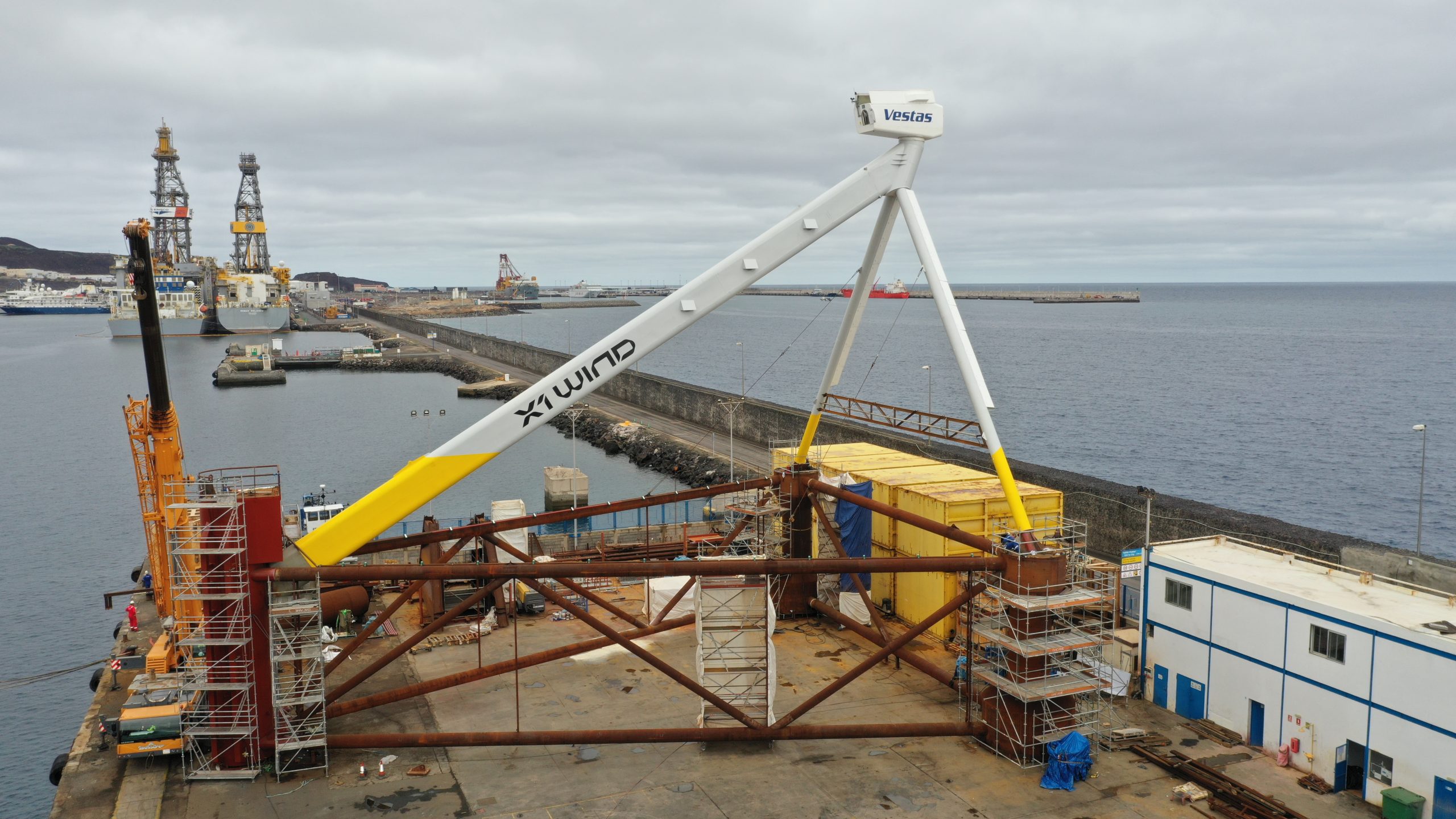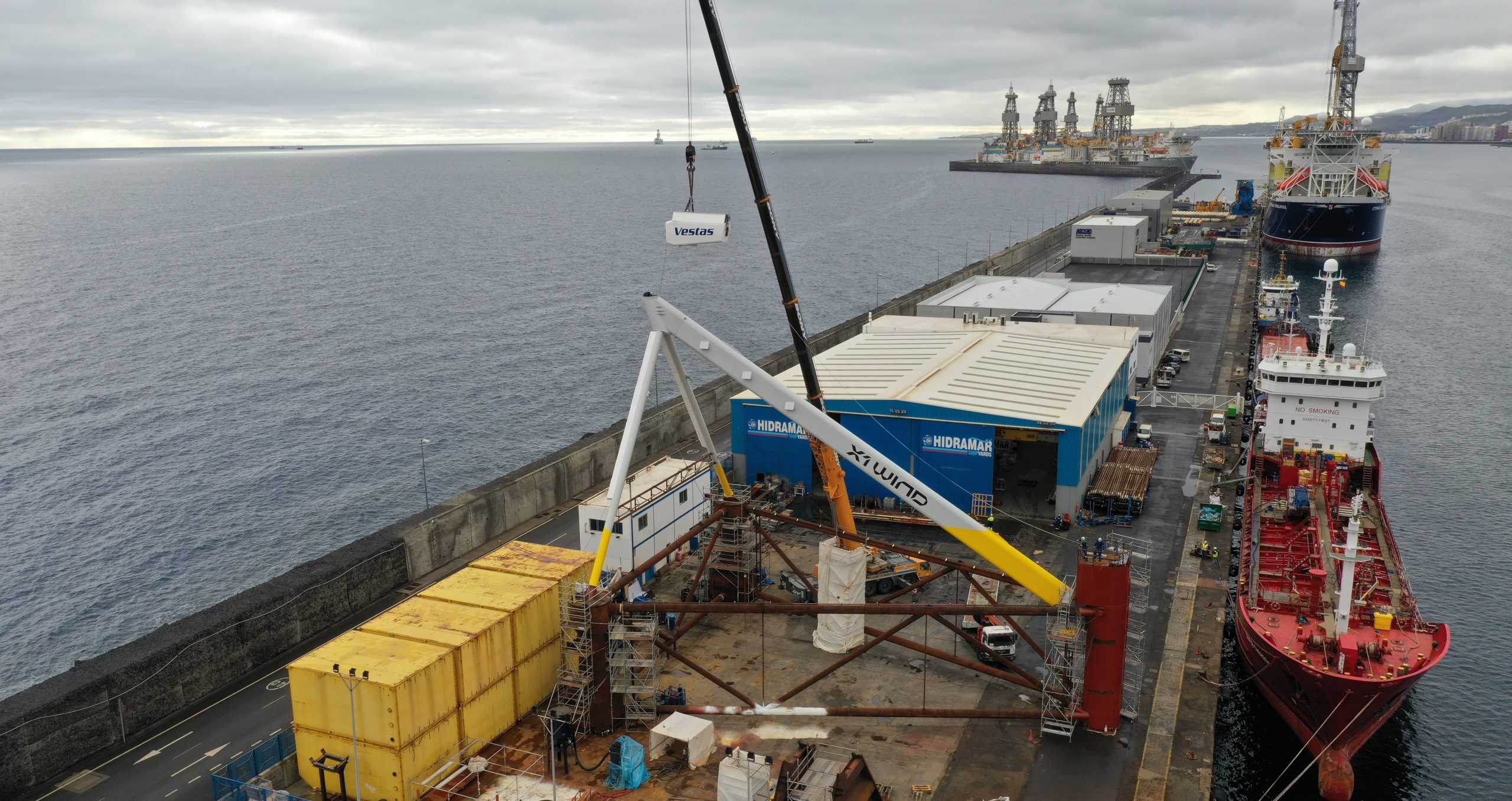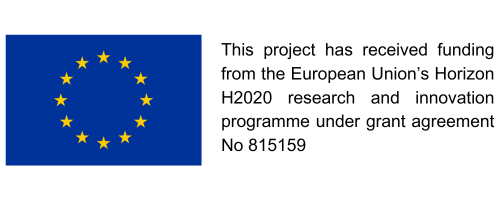After almost two years of hard work, X1 Wind’s floating structure developed by X1 Wind in close collaboration with the PivotBuoy project partners is nearing completion and moving forward towards the commissioning phase at PLOCAN test site in the Canary Islands.
The PivotBuoy Project will demonstrate the advantages of the PivotBuoy® system, with the tests of a 1:3 scale prototype with a Vestas V29 turbine adapted in a downwind configuration in real operational conditions. The Consortium is formed by nine partners: X1Wind, ESM, WavEC, PLOCAN, INTECSEA, EDP, DTU, DNV GL and DEGIMA.
The manufacturing phase of the project was successfully completed last November by DEGIMA, in Santander, and the structure was shipped to Gran Canaria by Actanis, the specialized project cargo division of Noatum. To facilitate the transportation and handling operations, the prototype was shipped in 9 different parts from Santander to Las Palmas, where the portside assembly is taking place in Hidramar, a shipyard with over 25 years of experience in the Oil&Gas industry and Naval sector.
The assembly operations started before Christmas with the positioning of the three columns and the placement of the pontoons, shaping the floating base of the platform. In the past weeks, the top structure has been assembled, composed of the three masts that hold the downwind turbine, completing the structural assembly in Hidramar’s onshore dockyard. Finally, last week the Vestas V29 nacelle was installed on top of the PivotBuoy structure while the structure was still onshore, de-risking the operation and following onshore wind turbine installation standards. The blades will be installed after the load-out of the platform while the platform is still docked at quayside, allowing the operation to be performed by regular onshore cranes instead of heavy lift vessels normally needed to install offshore turbines. To streamline the procedures, X1 Wind engineers and PivotBuoy partners have worked in close cooperation with Hidramar technical office and workshop personnel, to oversee all assembly operations and gather know-how and feedback from the assembly strategy.
“During the last months, the main structural parts of the PivotBuoy prototype have been assembled. It has been done onshore, in Hidramar’s quay, using regular LTM mobile cranes and local equipment, avoiding risky and expensive heavy lift offshore operations”
Says Jorge Casanovas, X1Wind’s Site & Operations Manager.
In the following weeks, all electrical system will be installed and tested while the platform is onshore, further reducing costs and simplifying the operations. For all the performed operations a combination of local cranes has been used, equipment that can be typically found in most portside facilities.
X1 Wind’s goal is to develop wind floating structures that can be assembled and installed using local infrastructure to reduce costs and enhance scalability, while maximizing the local content in the areas where the systems will be operating. This approach also untaps the potential of floating offshore wind in remote locations without large port infrastructure, opening new markets, creating local value and contributing to its mission to tackle the current climate emergency.
The PivotBuoy Project aims to validate the benefits of the PivotBuoy® mooring system, An Advanced System for Cost-effective and Reliable Mooring, Connection, Installation & Operation of Floating Wind. While the scope of the project is on demonstrating the innovative PivotBuoy® single point mooring system, it will also enable the test of the Vestas V29 turbine adapted in a downwind configuration in real floating conditions at PLOCAN test site in the Canary Islands.
The Consortium is formed by nine partners from five different countries: X1Wind, ESM, WavEC, PLOCAN, INTECSEA, EDP, DTU, DNV GL and DEGIMA. The project officially started in April 2019 and will last for 36 months.
For further information about the project you can visit the project’s website:
www.pivotbuoy.eu or follow us on Twitter (@pivotbuoy) or LinkedIn.
